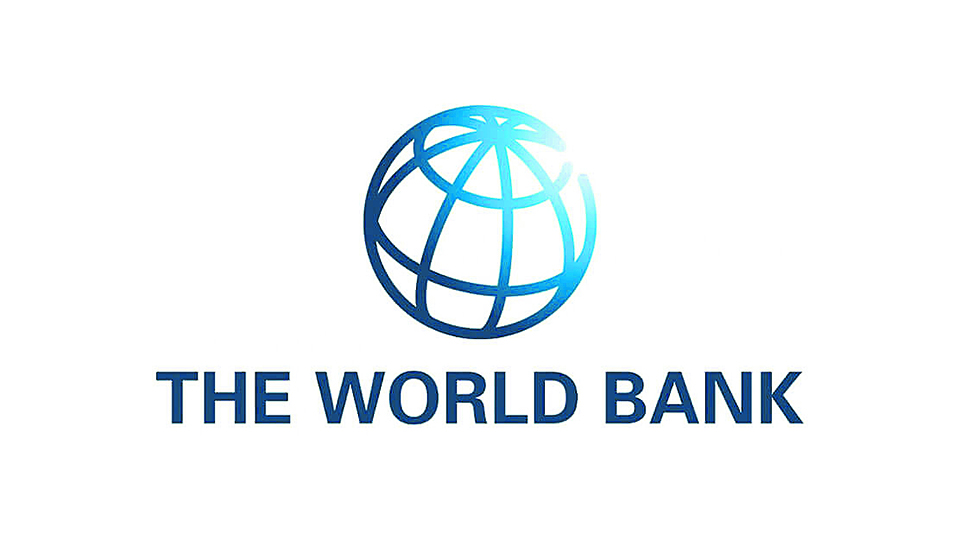
KATHMANDU, April 12: Nepal’s economic growth is expected to fall to a range between 1.5 and 2.8 percent in the Fiscal Year 2020 reflecting lower remittances, trade and tourism, and broader disruptions caused by the coronavirus outbreak, the World Bank said on Sunday.
Releasing its twice-a-year-regional update, the Washington-based international financial institution said that the prolonged outbreak of COVID-19 would impact growth significantly with a further deceleration or contraction in services and industrial production.
“Economic growth during FY21 is also likely to remain subdued due to the lingering effects of the pandemic with some recovery expected in FY22,” the WB said.
Faris Hadad-Zervos, World Bank Country Manager for Nepal said that they are closely monitoring how the COVID-19 pandemic is evolving across Nepal.
“Our immediate priority is to coordinate our action with the government, private sector and international development partners to ensure that health supplies and equipment are readily available and that a comprehensive recovery package is in place to support the poor and most vulnerable,” he said.
The impact of the pandemic will hit low-income people hard, especially informal workers in the hospitality, retail trade, and transport sectors who have limited or no access to healthcare or social safety nets.
The report has noted that the COVID-19 shock will likely reinforce inequality in South Asia.
“As played out across the region, the sudden and large-scale loss of low paid work has driven a mass exodus of migrant workers from cities to rural areas, spiking fear that many of them will fall back into poverty. While there are no signs yet of widespread food shortages, the report warns that a protracted COVID-19 crisis may threaten food security, especially for the most vulnerable,” said the WB in its report.
In the short term, the report recommends preparing weak healthcare systems for greater COVID-19 impacts, as well as providing safety nets and securing access to food, medical supplies, and necessities for the most vulnerable. To minimize short-term economic pain, the report calls for establishing temporary work programs for unemployed migrant workers, enacting debt relief measures for businesses and individuals, and easing inter-regional customs clearance to speed up import and export of essential goods.
Amid the mounting human toll and global economic fallout triggered by the COVID-19 pandemic, South Asian governments must ramp up action to curb the health emergency, protect their people, especially the poorest and most vulnerable, and set the stage now for fast economic recovery, the World Bank said.
In its South Asia Economic Focus, the WB anticipated a sharp economic slump in each of the region’s eight countries, caused by halting economic activity, collapsing trade, and greater stress in the financial and banking sectors.
In this fast-changing and uncertain context, the report has presented a range forecast, estimating that regional growth will fall to a range between 1.8 and 2.8 percent in 2020, down from 6.3 percent projected six months ago. “That would be the region’s worst performance in the last 40 years, with temporary contractions in all South Asian countries. In case of prolonged and broad national lockdowns, the report warns of a worst-case scenario in which the entire region would experience a negative growth rate this year,” it said.
This deteriorated forecast will linger in 2021, with growth projected to hover between 3.1 and 4.0 percent, down from the previous 6.7 percent estimate.
Once lockdown restrictions are loosened, South Asian governments should adopt expansionary fiscal policies combined with monetary stimulus to keep credit flowing in their economies. Since many South Asian countries have limited fiscal space, these policies should target people worst hit by the freeze on economic activity. The report urges governments to adopt temporary spending measures and coordinate with international financial partners to avoid unsustainable long-term debt levels and fiscal deficits.
“After tackling the immediate COVID-19 threat, South Asian countries must keep their sovereign debt sustainable through fiscal prudence and debt relief initiatives,” said Hans Timmer, World Bank Chief Economist for the South Asia Region. “And looking beyond the present crisis, lie great opportunities to expand digital technologies for payment systems and distant learning to unlock remote areas in South Asia.”
*Due to the COVID-19 pandemic, economic circumstances within countries and regions are fluid and change on a day-by-day basis.
The World Bank Group is taking broad, fast action to help developing countries strengthen their pandemic response, increase disease surveillance, improve public health interventions, and help the private sector continue to operate and sustain jobs, stated the press release.
The bank said that it is deploying up to $160 billion in financial support over the next 15 months to help countries protect the poor and vulnerable, support businesses, and bolster economic recovery.
प्रतिक्रिया दिनुहोस